Representative of our global ‘take, make, dispose’ consumption habits, e-waste is growing three times faster than any other waste stream. *
Improved device functionality, affordability and the accessibility of the Internet of Things contribute to the staggering quantities of e-waste, which is damaging our planet and also human health.
According to the United Nations, global electronic and electrical waste grew by 21% between 2014 and 2019; the world discarded 53.6 million metric tonnes (mT) of e-waste in 2019. If this rate continues, we will see volumes double in 16 years. **
The UN has stated that by 2030, global e-waste could increase by 39%, rising to 74.7 mT per year. +
The digital revolution’s recent acceleration has hugely benefited business productivity and overall performance. The frequent upgrade cycles ensure organisations remain competitive and maximise team resources.
Despite the EU’s Waste Electric and Electronic Equipment (WEEE) directive 2013 and the GDPR legislation 2018, a huge number of UK businesses still fail to dispose of their tech responsibly, risking the legal implications as a result of non-compliance. In addition to the commercial electronic waste, according to the UK government, UK households still throw 155,000 tonnes of electricals into their general rubbish, each year. Once deemed to be end of life IT assets, our redundant IT equipment or tech is perceived to have no real resale value; therefore, there’s no real incentive for many to make the additional effort required when it comes to its disposal.
When our tech ends up in landfill, batteries explode, causing fires and toxic chemicals that are known to damage the human central nervous system leach into our soil and waterways.
At least 69 of the chemical elements in the periodic table have been identified as common components in electronic products, many are hazardous both to people and the environment. ++
High-income nations have been known to ship their e-waste overseas for disposal, including exports to several West African countries. If it doesn’t go to landfill, it may end up somewhere like Seelampur, India’s largest informal electronic waste market. Thousands are employed in poor conditions to break down the waste without any protection from the arsenic, mercury and lead (and more). Employees include 500,000 children. *
Most are aware of the dangers, but also the financial gain. They are searching for the billions of dollars of precious metals – gold, silver, palladium, and copper amongst others that are literally thrown away every year. The majority of us have no idea that there is significant value hidden in that old laptop and for businesses – this is often a missed revenue stream – budget that can be recovered.
What precious metals are used in our technology?
Let’s use an example most of us are highly familiar with – a smartphone, which has an average lifecycle of just 21 months. ^ Our phones contain gold, silver, copper, palladium, aluminium, iron, copper, gallium, indium, nickel, pewter and cobalt, and can also include over 20 additional chemicals. ++
According to the World Economic Forum, within one million mobile phones, you will find 24kg of gold, 16,000kg of copper, 350kg of silver and 14kg of palladium. The most infinite and precious of earth’s elements. Yet despite there being almost 15 billion mobile devices operating worldwide in 2021, ^^ smartphones represent a fraction of global electronic waste.

Why do tech manufacturers use earth’s most valuable elements?
Why are some of the most expensive elements in the world used so extensively in electronics? Taking gold as an example; it is a great conductor so electricity flows with minimal resistance. It’s superior to other conductors such as copper or aluminium so it’s key in the production of most circuit boards and specific components, like switch and relay contacts. Its pliability makes it easy to install in increasingly small devices and it doesn’t tarnish or corrode. Silver and palladium are present in solder and other circuit board components, whilst copper forms the connective wires.
Is our technology unsustainable?
A 2020, UN report found that over £7.9 billion worth of platinum, gold and other precious metals were dumped every year within our electronic devices. # Not only is it exceptionally wasteful to simply discard an element that is billions of years old, it is simply unsustainable.
Gold mining is one of the most destructive activities in the world. Extraction uses cyanide and mercury; it generates huge waste mountains. Mining activity has been linked to unsafe working conditions, contaminated water sources and subsequent mercury poisoning of local communities, along with the destruction of ecosystems – illegal gold mines in Brazil are said to be responsible for mass deforestation of the Amazon. Similarly, Lithium mines supplying the rechargeable batteries in your devices are reported to have similar highly negative environmental consequences. According to the BBC, over the last 50 years, material extraction has tripled; resources are now becoming harder to find, more expensive, and the environmental costs of extraction ever greater; mining also generates huge quantities of greenhouse gases.
Why would we resort to virgin mining for these finite materials when we already have a plentiful supply that can be recovered and returned to the production cycle; after all, these precious metals are enormously recyclable.
Recycling circuit boards can be more valuable than mining for gold itself. One ton of circuit boards is estimated to contain up to 800 times more gold than one metric ton of ore. In addition, there is 30- 40 times more copper in that same pile of circuit boards; that would be found in mined copper ore, Chalcopyrite. +
How can you recover value from your IT assets?
The concentrations of precious metals are reported to be 40-50 times more in e-waste than within its natural ore. ## Termed ‘urban mining’, we can extract valuable metals and minerals, yet, in 2019, just 17.4% of the world’s e-waste was recycled. This meant that over US $57 billion of high-value, recoverable materials were lost – a figure higher than most countries’ GDP. **
Demonstrating both ethical operational processes and your organisation’s compliance with the WEEE directive is essential; data security is also vital for businesses to protect company data contained within their e-waste.
Environmentally friendly ITAD not only guarantees full data erasure but secure IT asset disposal ensures you remain compliant with both data protection and electronic waste legislation. Your ITAD partner will issue an IT asset disposal accreditation certificate for each sanitised asset; this provides that all-important ITAD chain of custody.
IT asset disposal companies live and breathe asset recovery. Not only can you rest assured that there will be no data governance issues arising from your old tech, but the redundant IT assets are also broken down to enter the remanufacturing industry. Having undergone professional data erasure, the device components are sent to specialist recycling facilities that can recover as much as 95% of the gold used. ##
Alongside the positive environmental impact and the role organisations will play in the circular economy, businesses also receive the residual value for the components extracted, effectively organisations sell redundant IT assets, which may have previously been considered to hold no financial value.

Europe proudly led the way when it came to responsible disposal of e-waste with the introduction of the WEEE regulations, recycling 42.5% in 2019. + Whilst this is great progress, there’s still much more to be done.
Our e-waste mountains will only increase given our reliance on tech and the digital transformation of our businesses. Our response must keep pace with the rising quantities of waste.
Changing our behaviours is the only solution. The good news is that every business can play its part in this transition towards a ‘reduce, recycle reuse’, circular approach. According to the World Economic Forum, a circular vision will not only reduce waste but could yield up to $4.5 trillion in economic benefits by 2030.
Sustainability is financially viable; it is great for the environment but also boosts your bottom line, with two-thirds of consumers valuing ethical organisations. Your IT asset disposal policy is no longer simply about legal compliance, but forms part of your sustainability policy, supporting your transition to a circular operational model.
*Channel Four News, ** The United Nations, +Earth911, ++El Kertsen, ^Soci, ^^Statista, #Morson Talent, ##The Balance,
tier1 provide a comprehensive environmentally friendly ITAD, secure data erasure services and IT asset disposal, including mobile device recycling. We are proud to help businesses transition towards a sustainable, circular model, whilst remaining fully compliant.
Find out how our end-of-life IT asset recycling and data wiping services can support your organisation – contact us on 0161 777 1000 or visit tier1.com
Resources.
World Economic Forum, ERI Direct, GWI, Earth 911, The Print, Channel Four, Statista, Monroe Engineering, El-Kretsen, Earthworks, The BBC, The Balance, Smithsonian, Morson, UK Government, United Nations University,



